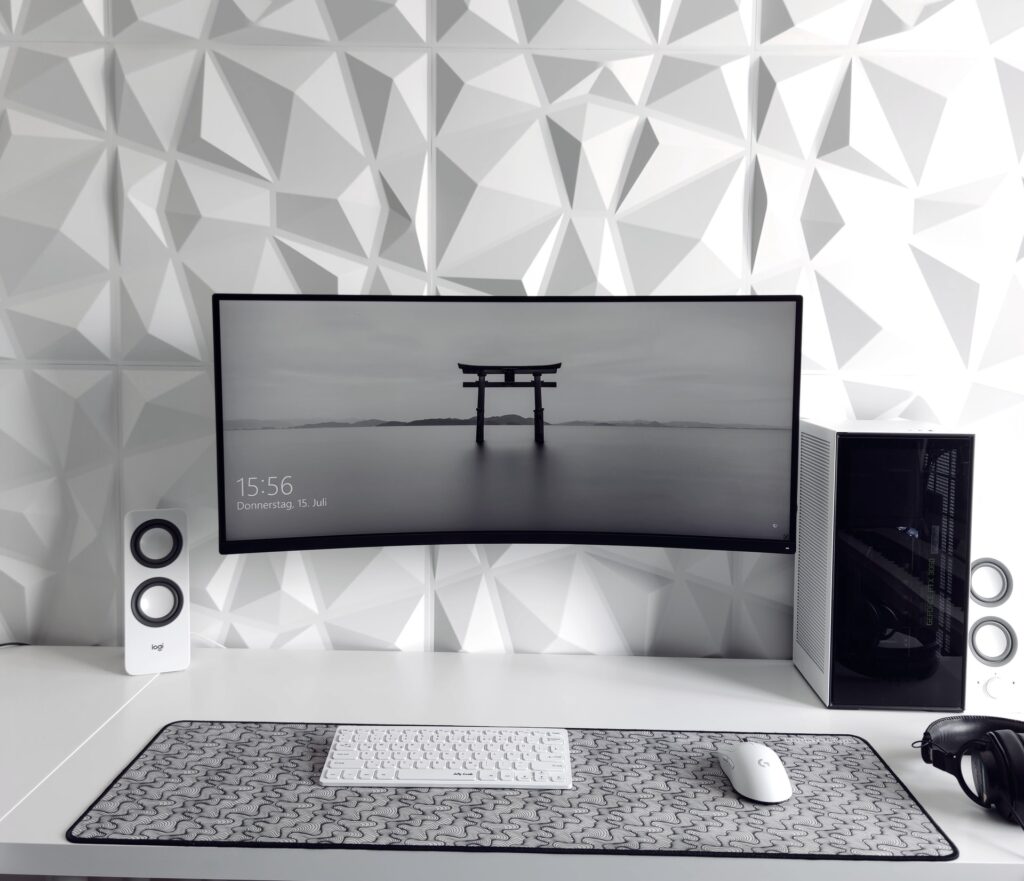How To Wall Mount Your Monitor: Step By Step Instructions

Why Wall Mount a Monitor?
A monitor can be mounted on the wall to save space on a desk or countertop. This is especially useful if the monitor is used in a crowded area, such as a child’s bedroom. Mounting the monitor also allows it to be easily replaced if it gets damaged. Additionally, wall mounting may increase the monitor’s visibility, making it easier for people to see what they are working on. This article will provide you with information on how to mount a monitor, as well as some important tips on choosing the correct wall mount for your monitor.
Types of Wall Mounts
There are many different types of wall mounts on the market. Some mounts require drilling holes in your wall, while others do not. Here are a few of the most popular types of wall mounts:
1) The fixed mount is the simplest type of wall mount. It attaches to your wall and holds your TV or monitor in place. There is no movement or adjustment possible with this type of mount.
2) The tilt mount allows you to tilt your TV or monitor up and down, so you can adjust the viewing angle. This type of mount is ideal for those who want to be able to change the angle of their screen easily.
3) The pivot mount also allows you to rotate your TV or monitor from side to side, so you can get the perfect viewing angle. This type of mount is perfect for those who want more flexibility when it comes to viewing their screen.
Choosing the Right Wall Mount
When it comes time to wall mount a monitor, there are a few things you need to consider. The most important factor is the weight of the monitor. Make sure the mount can handle the weight. You also need to make sure that you have enough space on the wall to accommodate the mount.
The type of mount you choose will also be important. There are several different types of mounts, including tilting mounts, full-motion mounts, and fixed mounts. Tilting mounts allow you to tilt the monitor up and down, while full-motion mounts allow you to move the monitor side-to-side and up and down. Fixed mounts are best for monitors that will not be moved often.
Before purchasing a wall mount, make sure to measure the dimensions of your monitor and compare them with the dimensions of the mount.
Installing the Wall Mount
Wall mounting a monitor is the best way to save desk space and keep your work area organized. The process is simple, but there are a few steps you need to take to ensure a secure and accurate installation.
Tools and Materials:
The process of installing a wall-mounted monitor is not difficult, but it does require some basic tools and materials.
The first step is to gather the tools and materials you will need for the job. You will need a drill, a level, a stud finder, screws, anchors, and a drill bit that is the same size as the screws you are using.
Measuring and Marking:
After gathering the tools, you’ll need to measure the distance between the top of your monitor and the bottom of where you want it to sit on the wall. This will determine the length of the mount.
Once you have your measurement, mark the spot on the wall where you will install the mount using a level to ensure accuracy.
Drilling the Holes:
Once the markings have been made, use a drill bit that is slightly smaller than the screws that will be used to mount the monitor.
You will drill the two holes for your monitor mount. The first hole will be for the screws to go into and the second hole will be for the monitor to hang from. Drill pilot holes into the wall at each of the marked locations.
Mounting the Monitor:
Once the holes are drilled, Finally, use a screwdriver to attach the monitor to the wall using the screws that were provided. Be sure to tighten them securely so that your monitor does not fall off of the wall.
The Benefits of Wall Mounting a Monitor
Wall mounting a monitor has many benefits, chief among them is the potential to save desk space. Wall mounting also creates a neater appearance and can free up desk space for other tasks. Monitors mounted on walls also tend to be more stable than those sitting on desks. This is because when monitors are wall mounted, they are less likely to be jostled or bumped. Additionally, wall mounted monitors may be easier to see from different angles.
Conclusion
In conclusion, wall mounting a monitor is a great way to save space and keep your work area organized. It is a relatively simple process, but it is important to follow the instructions carefully to avoid damaging your monitor or wall. By following these simple steps, you can mount your monitor in no time and be ready to get to work!